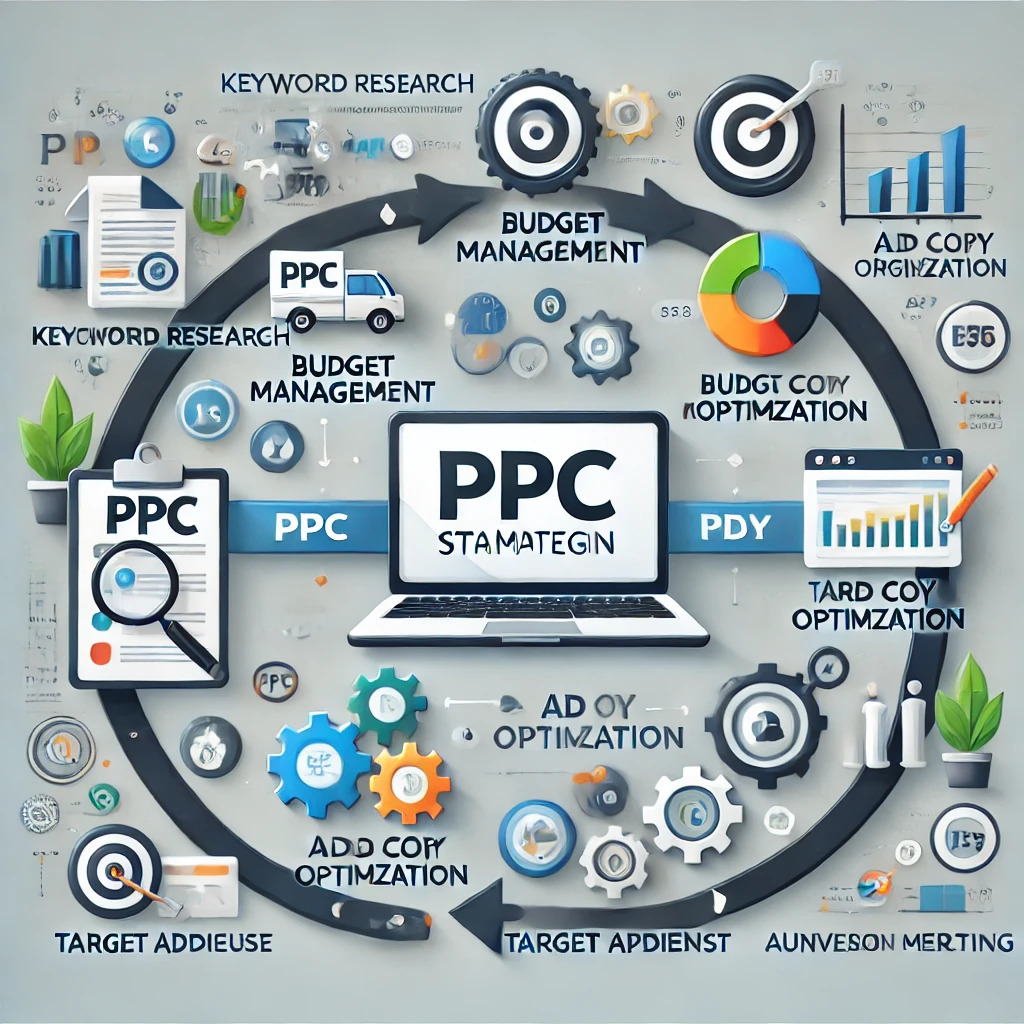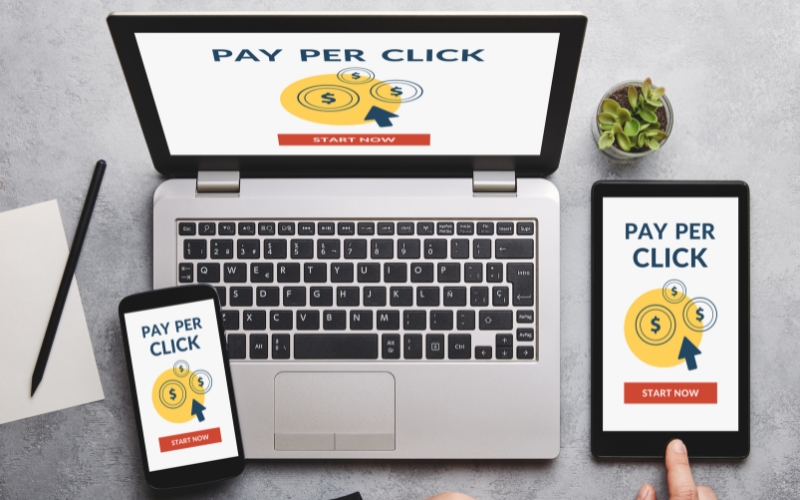
Pay-Per-Click (PPC) advertising is a powerful and efficient way to drive targeted traffic to your website, helping businesses achieve quick and measurable results. However, for PPC strategies to be truly effective, it’s essential to understand the basics of how they work, particularly when it comes to maximizing return on investment (ROI). By optimizing campaigns and aligning ads with business goals, companies can ensure that their ad spend yields the highest possible return. This article will explore the importance of understanding PPC and ROI, highlighting how businesses can make the most of their digital advertising efforts.
Understanding the Basics of PPC and ROI

Pay-Per-Click (PPC) advertising is one of the most effective digital marketing strategies used by businesses to drive targeted traffic to their websites. In a PPC campaign, advertisers bid on keywords relevant to their products or services, and they pay each time a user clicks on their ad. The core advantage of PPC strategies lies in its ability to deliver immediate, measurable results. However, to ensure success, businesses need to understand the intricacies of PPC and how to maximize their return on investment (ROI).
At its core, PPC is a performance-based advertising model where businesses pay for the actions (clicks) that users take. Whether through Google Ads, Bing Ads, or social media platforms, the goal is simple: drive traffic to your website and convert that traffic into sales or leads. But while driving traffic is important, what truly matters is ensuring that the traffic generated provides a positive return on the money spent.
Maximizing ROI with PPC strategies means getting the most out of every dollar spent on ads. This requires a balanced approach—carefully choosing keywords, creating compelling ad copy, and ensuring that the landing pages align with the user’s intent. The relationship between ad spend and ROI is a delicate one: too little spend can limit visibility, while too much spend without optimization can drain budgets quickly without yielding sufficient returns.
A key element of successful PPC strategies is effective budget management. By continually analyzing data from PPC campaigns, businesses can track key metrics such as click-through rate (CTR), conversion rate, and cost per acquisition (CPA). Monitoring these metrics helps businesses adjust their campaigns, ensuring that their ads are targeting the right audience at the right time. For instance, focusing on high-converting keywords or optimizing underperforming ads can significantly improve the ROI of PPC campaigns.
In addition to budget control, leveraging audience targeting is another critical component of maximizing ROI with PPC strategies. Platforms like Google Ads offer advanced targeting features, including demographic, geographic, and behavioral targeting, which ensure that your ads reach the most relevant audience. By narrowing the target audience, businesses reduce wasted spend and increase the chances of conversions.
Keyword Research: The Foundation of Successful PPC Campaigns

Keyword research is the cornerstone of any successful PPC campaign. Effective PPC strategies begin with identifying the right keywords to target, as they directly influence your ad’s visibility and relevance to potential customers. When you select the wrong keywords, you risk wasting your ad spend on irrelevant clicks, which leads to poor ROI. Conversely, choosing the right keywords can drive highly relevant traffic to your website, increasing the likelihood of conversions and maximizing your ROI.
The first step in keyword research is understanding your target audience and their search behavior. By knowing what your customers are searching for, you can create a list of keywords that align with their needs and intent. Using a variety of tools, such as Google Keyword Planner, SEMrush, or Ahrefs, allows you to discover keywords that not only have a high search volume but also a lower competition rate. These tools provide insights into search trends, keyword difficulty, and cost-per-click (CPC) estimates, which are essential for devising PPC strategies that drive efficient results.
Long-tail keywords are a particularly valuable asset in PPC strategies. These are more specific, multi-word phrases that tend to have lower competition and higher conversion rates. Although long-tail keywords may have lower search volume, they often indicate stronger purchase intent. For example, a generic keyword like “shoes” might attract a broad audience, but “buy running shoes for flat feet” is more specific and likely to convert better. By incorporating these types of keywords into your campaigns, you can ensure that your ads are seen by users who are more likely to make a purchase.
Negative keywords are another crucial element of keyword research. These are words or phrases that prevent your ads from showing up in irrelevant searches. By adding negative keywords to your PPC strategies, you can filter out clicks that would not lead to conversions, thereby improving the quality of your traffic and increasing your ROI. For example, if you’re running a PPC campaign for high-end running shoes, you might add “cheap” or “discount” as negative keywords to avoid wasting ad spend on bargain-hunters.
Optimizing Ad Copy and Landing Pages for Better Conversions

One of the key components of effective PPC strategies is crafting compelling ad copy that grabs the attention of potential customers and persuades them to click on your ad. However, creating great ad copy is only half the equation. For optimal conversions, the ad copy must align with the landing page it leads to. This alignment ensures that the user experience is seamless, improving the chances of conversion and maximizing the return on investment (ROI).
When it comes to ad copy, the goal is to be clear, concise, and persuasive. Your ad should communicate the value of your product or service immediately. Strong action words and a clear call-to-action (CTA) are essential for driving engagement. For instance, using phrases like “Buy Now,” “Get Started,” or “Limited Time Offer” creates a sense of urgency and encourages users to take action. In PPC strategies, relevance is key—your ad copy should directly address the problem your target audience is trying to solve, making it impossible for them to ignore.
However, having great ad copy isn’t enough if your landing page fails to deliver on the promise made in the ad. A seamless transition from the ad to the landing page increases the likelihood of conversion. The content on the landing page should echo the messaging of the ad, ensuring that visitors feel they are in the right place. Additionally, the landing page should feature a strong CTA, intuitive navigation, and relevant content that aligns with the user’s intent.
A/B testing plays a critical role in optimizing both your ad copy and landing pages for better conversions. By running A/B tests, you can compare different versions of your ad copy and landing pages to determine which elements resonate best with your audience. For instance, you can test different headlines, CTAs, and images to see which combination leads to the highest conversion rate. With PPC strategies, continuous testing and iteration allow you to fine-tune your campaigns, ensuring that each component—whether the ad copy or the landing page—performs at its best.
In addition, make sure your landing page is mobile-optimized. A significant portion of traffic comes from mobile devices, and a page that isn’t mobile-friendly will result in higher bounce rates, affecting both your ad performance and ROI.
Utilizing Audience Segmentation and Targeting for Precision

One of the most powerful components of PPC strategies is audience segmentation and targeting. By dividing your audience into smaller, more specific groups, you can tailor your campaigns to be more relevant, which in turn can significantly increase your return on investment (ROI). Advanced targeting options allow businesses to focus their efforts on users who are most likely to convert, ensuring that every dollar spent on ads is used efficiently.
Audience segmentation allows you to categorize your target market based on various criteria such as demographics, interests, location, and behavior. This approach ensures that your ads are seen by the right people, at the right time, with the right message. For example, by segmenting your audience based on age, gender, or income level, you can create personalized ads that speak directly to their specific needs or desires. When you align your ads with the exact characteristics of your target audience, you increase the relevance of your campaigns, leading to higher engagement rates and conversions.
Behavioral targeting is another key aspect of advanced PPC strategies. It allows you to focus on users who have already demonstrated an interest in your product or service. For example, users who have previously visited your website, added products to their cart, or interacted with your brand on social media are more likely to be receptive to retargeting ads. By showing them relevant ads based on their past actions, you keep your brand top-of-mind and encourage them to complete the desired action, whether that’s making a purchase or signing up for a service.
Retargeting is especially effective in improving ROI because it focuses on warm leads—users who have already shown some level of interest in your business. Studies have shown that retargeting ads can significantly increase the likelihood of conversions, as these users are more familiar with your brand and are often more likely to engage. By refining your PPC strategies with retargeting and behavioral targeting, you ensure that your ads reach people who are already primed to take action.
In addition to these targeting techniques, geographic and device-based targeting can further enhance the precision of your campaigns. By segmenting your audience based on location or the device they use, you can optimize your ads for specific markets or platforms, ensuring that your campaigns are always relevant and effective.
Tracking, Analyzing, and Adjusting Campaigns for Continuous Improvement
![]()
One of the most essential components of any successful PPC strategy is the ability to track, analyze, and adjust campaigns based on key performance metrics. Without ongoing optimization, even the most well-designed PPC strategies can fail to deliver their full potential. By continuously monitoring and refining campaigns, businesses can ensure that their advertising spend is being used effectively, leading to sustained improvements and higher return on investment (ROI).
Tracking key metrics such as click-through rate (CTR), conversion rate, and cost per acquisition (CPA) is crucial for understanding how well your PPC campaigns are performing. The CTR measures the percentage of people who click on your ad after seeing it, which directly reflects how engaging and relevant your ad is to your target audience. A high CTR indicates that your ad copy, keywords, and targeting are resonating well with users, while a low CTR may indicate the need for changes in these areas.
Conversion rate is another critical metric, as it measures the percentage of users who complete a desired action after clicking on your ad, such as making a purchase or filling out a form. If your CTR is high but your conversion rate is low, it may suggest that your landing page or user experience isn’t optimized for conversions. In this case, refining your landing page content, CTAs, and overall user experience could help increase conversions and maximize the ROI of your PPC strategies.
Cost per acquisition (CPA) is a vital metric for assessing the efficiency of your PPC campaigns. It calculates how much you are spending to acquire a customer, making it a direct measure of your campaign’s profitability. Lowering CPA while maintaining or increasing the quality of conversions is a primary goal for most businesses. If your CPA is too high, it might indicate that your targeting is too broad, your ads are underperforming, or your landing pages are not converting effectively.
The process of data analysis is essential for adjusting and optimizing your PPC strategies. By leveraging tools like Google Analytics, Google Ads, or other PPC platforms, you can gather detailed insights into your campaigns’ performance. Analyzing trends and identifying areas for improvement allows you to refine targeting, adjust bids, test new ad copy, and experiment with different landing page designs.
Conclusion
To gain a deeper understanding of PPC strategies and how they impact ROI, it’s essential to stay updated with the latest trends and best practices in digital marketing. For example, WordStream offers a comprehensive guide on PPC management, providing valuable insights on campaign optimization, keyword selection, and budget management. By utilizing expert resources like these, businesses can further refine their strategies and drive better results from their PPC campaigns.
In conclusion, maximizing the ROI of your PPC campaigns requires a deep understanding of PPC strategies and how to implement them effectively. By focusing on key components such as keyword selection, ad copy optimization, and precise audience targeting, businesses can ensure that their advertising dollars are being spent wisely. Continuous tracking and adjusting based on performance data further enhance the effectiveness of campaigns, allowing companies to refine their strategies for even better results. By following these best practices, businesses can drive higher conversions, improve ROI, and fully leverage the power of PPC advertising.
For more details or to discuss your specific PPC services, visit our PPC Services page.

